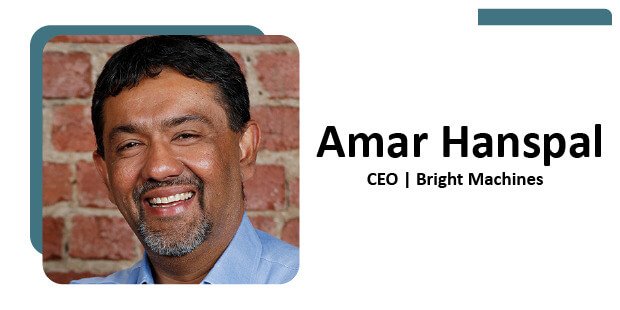Bright Machines: Revolutionizing Manufacturing with Software-Defined Microfactories
The global landscape is in the midst of a swift transformation towards software-driven automation, wherein intelligent software manages hardware systems. This is exemplified by ground breaking technologies such as Amazon’s Alexa and Tesla’s cars. However, there appears to be a widely held misconception that the manufacturing industry is also heading towards automation. In actuality, when the topic of automation in manufacturing arises, it generally pertains to hardware-defined manufacturing, where individual pieces of equipment are specially crafted and utilized to carry out repetitive tasks, leading to a notable lack of flexibility.
In the realm of hardware-defined manufacturing, the absence of data integration implies a dearth of opportunities for improvement compared to software-defined manufacturing. Moreover, hardware complexity and lack of software involvement may lead to reduced productivity, requiring constant human intervention for seamless operation, culminating in prolonged time-to-market and idle production lines.
Bright Machines, a San Francisco-based company, seeks to integrate Software-Defined Manufacturing, which delegates manufacturing processes to software, from assembly to testing. The integration of software in the manufacturing process could significantly enhance flexibility and productivity, while reducing the requirement for persistent human involvement and mitigating idle production lines.
The Ascension of Automation
For any industry to achieve optimal productivity, stability is essential, and the manufacturing sector is no exception. Bright Machines seeks to achieve this stability by eliminating the unwanted complexities that manufacturers face daily, such as reducing the time to market, minimizing equipment wear and tear, and, most importantly, ensuring higher quality. Formerly known as AutoLabs AI, the company was founded in 2018 as a stealth startup by a group of experienced professionals who assembled a top-notch team, including some of the brightest minds in applied science, software engineering, robotics, and more. By leveraging the collective expertise of these talented individuals, Bright Machines has developed a system that integrates machine learning, computer vision, and configurable robotic cells, allowing for intelligent assembly processes.
Bright Machines has achieved remarkable financial success, generating around $100M in revenue within just one year of operation. Its success is partly attributed to the company’s ability to secure customers in both the automotive and electronics sectors, demonstrating its expertise in both industries. Bright Machines is rapidly expanding its operations by developing new products and investing in its workforce, which currently stands at 400 employees. The company’s growth is fueled by significant investments totaling $229M, which have enabled it to increase its market value to approximately $679M, as reported by data research company Pitchbook.
Software and Hardware Converge: Exploring the Intersection
Bright Machines has recently made it to the 13th spot in Forbes AI 50, but what is the key disruptive factor that this one-year-old company brings to the manufacturing industry?
The answer lies in its Microfactories that integrate software, machine learning, computer vision, and adaptive robotics to create an automation platform. This hardware and software combination addresses the assembly and inspection challenges at the end of factory lines. Leveraging cloud-based architecture and AI, the Micro factories offer enhanced assembly efficiencies that continue to evolve and automate over time. Bright Machines’ Micro factory solution comprises Brightware, a cloud-based software, and Bright Robotic Cells, a hardware based on adaptive robotics technology. With instructions from the user, Brightware builds custom products and sends them to the machine, and the hardware can be effortlessly joined together like Lego blocks to design a customized assembly line for production.
The Necessity of Microfactories
Globalization has enabled countries to connect and enabled corporations to establish factories globally to increase productivity and decrease labor costs. This approach has been successful over the past few decades, but with the increasing demand for personalized products, companies are now seeking ways to localize their manufacturing facilities to meet this demand. This is where Microfactories become significant, leveraging automation to reduce costs and improve efficiency by reducing expensive labor and ensuring consistent product quality. As a result, aspiring entrepreneurs with product ideas can implement them without waiting for substantial investments. Consequently, the cost of innovation significantly decreases, and this is precisely what Microfactories aim to achieve in the coming years.
Meet the leader behind the success of Bright Machines solutions
Amar Hanspal, who is the CEO of Bright Machines, has a strong background in the technology industry. Prior to founding Bright Machines in 2018, he served as Chief Product Officer at Autodesk, where he oversaw the company’s software portfolio and led the transition to cloud-based services. Amar has a bachelor’s and a master’s degree in mechanical engineering, and has completed an executive managerial program at Stanford University. Under Amar’s leadership, Bright Machines has become a leader in the manufacturing automation industry, developing innovative AI-powered software and robotics solutions. He is also a board member of nTopology, a company that provides engineering design tools for advanced manufacturing. Amar’s achievements have earned him recognition as a thought leader and respected CEO in the field.




